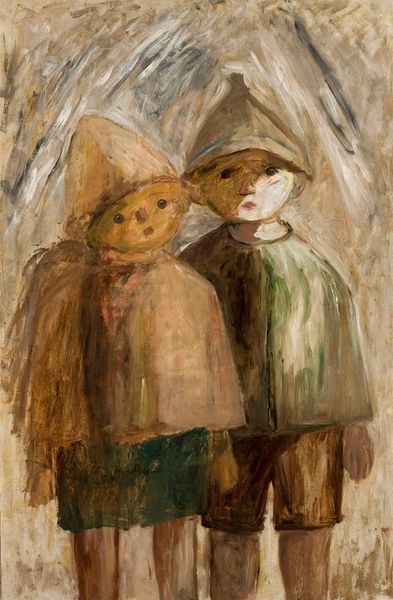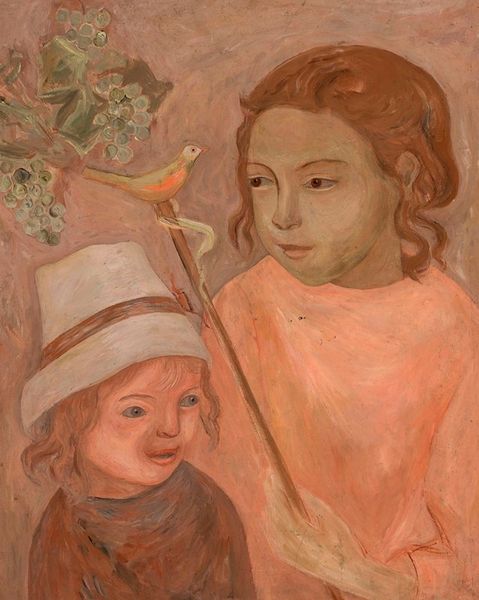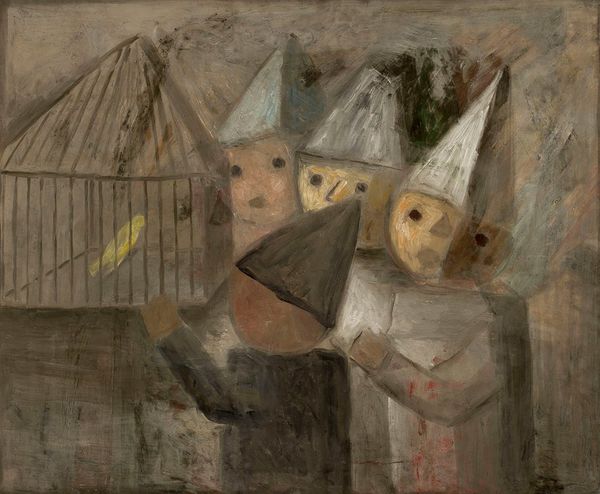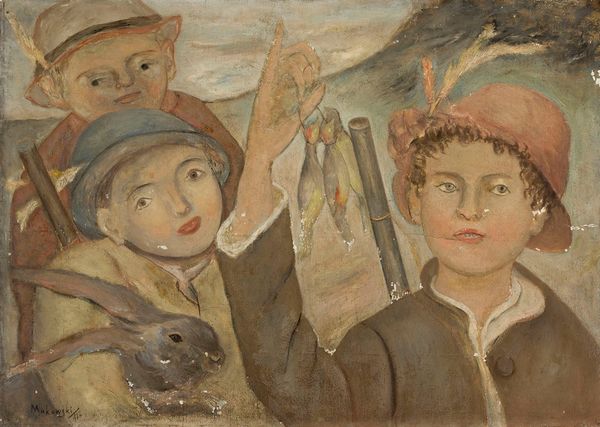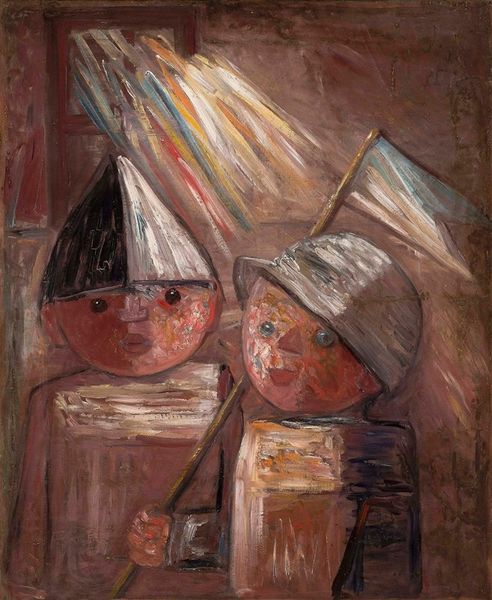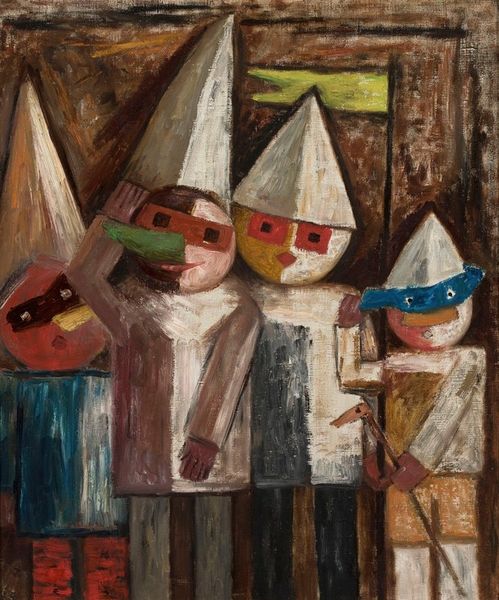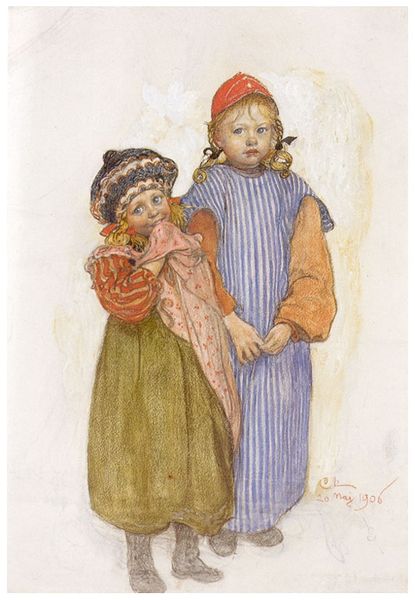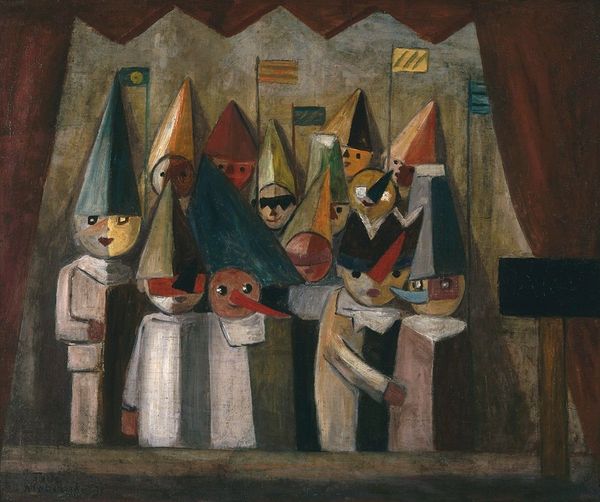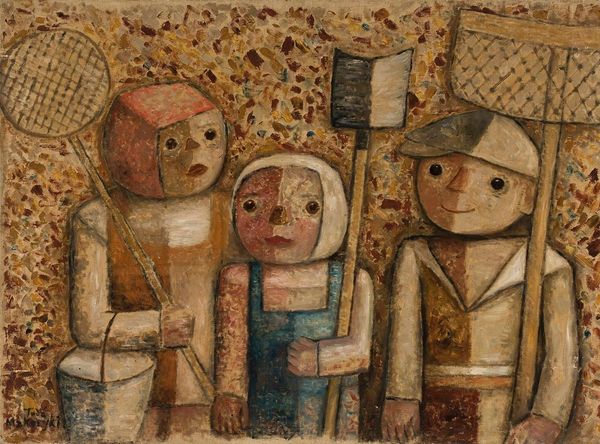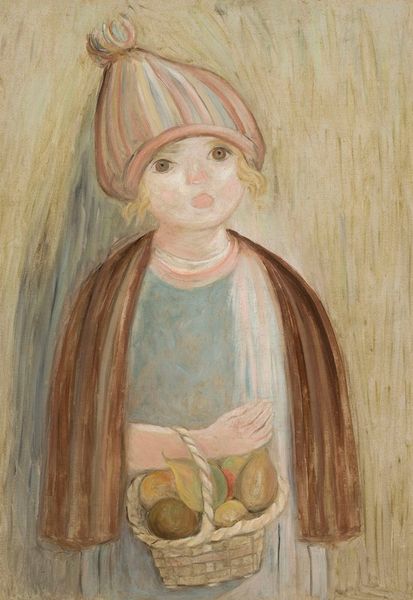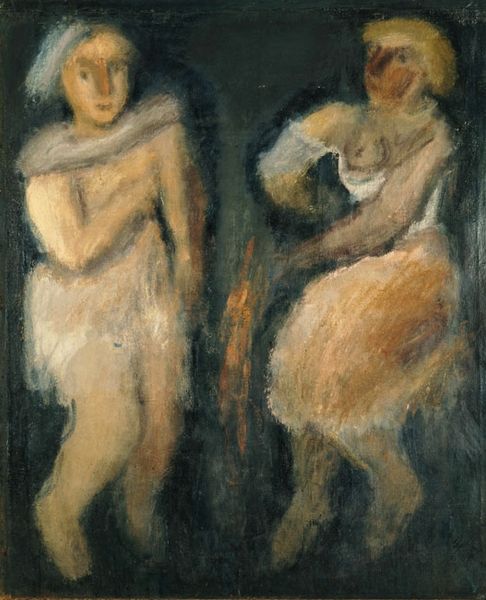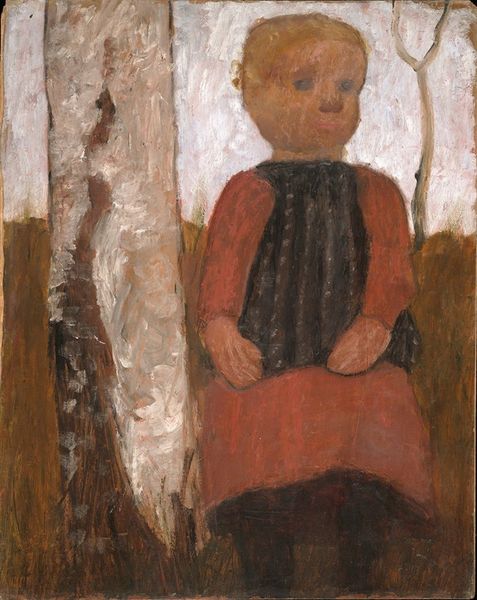
painting, oil-paint
#
portrait
#
figurative
#
painting
#
oil-paint
#
oil painting
#
genre-painting
Copyright: Public Domain: Artvee
Curator: We're looking at Tadeusz Makowski's "Boys with Rural Pipes" from 1928. An oil painting showing two young boys with handmade instruments. Editor: There’s an interesting kind of solemnity, despite the rustic subject. They don’t strike me as joyful musicians, more like players caught in a staged portrait, perhaps children enacting adult expectations in their clothes. Curator: It’s crucial to understand Makowski’s trajectory within the School of Paris to appreciate this. He drew heavily from folk art, portraying the peasant life of children. Editor: And yet, are these boys empowered? Or are they props within a narrative? It strikes me that children within rural settings are used within very loaded, often politically fueled imagery. Their representation tells more about us. Curator: Consider the context: Poland recovering from war, a nation seeking an identity. Makowski found authenticity in rural life, representing children as inherently innocent, outside the corrupting influences of modernity. The stylized features almost look mask-like to our eye, but they point to traditional Polish puppetry, too. Editor: Masks that often play a satirical role, right? Are we supposed to critique these children’s simplicity? The boys' matching serious gazes makes you question whether there's supposed to be joy. Are the pipes crude attempts at musical instruments? Who has the authority to determine that they are symbols of a joyful return to folkloric ways? Curator: It comes back to that search for national identity and visual vocabulary in interwar Poland. In representing this "simple" rural life, he builds a specific idea of national purity. The painting certainly gained popularity among elites, with its nostalgic gaze back towards peasant life. Editor: But at what cost to these figures of children? The composition suggests something beyond idyllic; those large eyes stare outward with a peculiar knowing. As if their silence protects them from the complexities of being used as vessels for somebody else's idea of authentic expression and heritage. Curator: Exactly. It really underscores how artworks reflect not just artistic intent, but larger socio-political aspirations. Editor: Precisely, viewing art isn’t passive; it's an interrogation. It demands a critical lens that is open to contemporary reflections and able to ask complicated questions about history and identity.
Comments
No comments
Be the first to comment and join the conversation on the ultimate creative platform.

